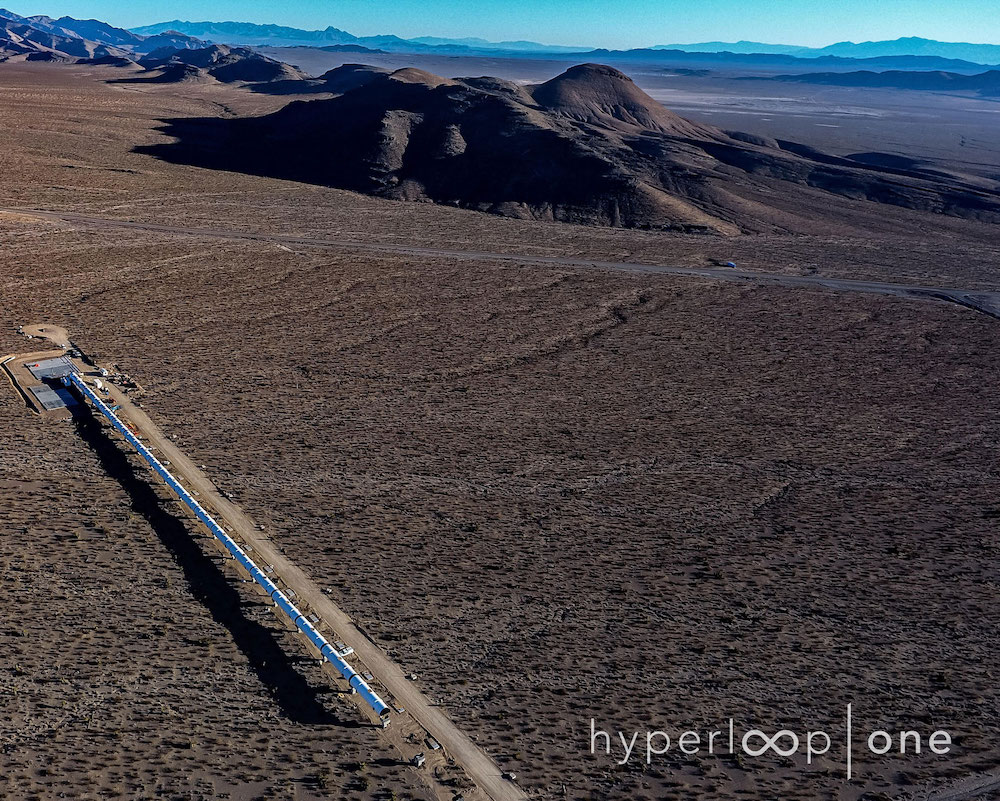Test Track for Ultra-Fast 'Hyperloop' Transit System Unveiled

Though it sounds like a transportation system straight out of a science-fiction novel, the "Hyperloop" is inching closer to reality, and new images offer a first look at the Hyperloop One project's test track.
First envisioned by SpaceX and Tesla founder Elon Musk, the Hyperloop is a transportation concept in which passenger-filled pods are accelerated through a low-pressure tube to their destination. The startup Hyperloop One (which is not affiliated with Musk) has begun construction of a full-scale test track, known as the DevLoop, in the Nevada desert.
This week, the startup revealed the first images of the DevLoop during the Middle East Rail conference in Dubai. [See More Photos of the Futuristic Hyperloop One Project]
The images show the track cutting across the desert landscape, at a site located about 30 minutes from Las Vegas. The DevLoop tube is about 1,640 feet (500 meters) long and 10.8 feet (3.3 m) in diameter.
"Our team of more than 150 engineers, technicians and fabricators have been transforming what was, just over five months ago, a barren stretch of desert, into a hive of activity and now home to the world's first full-scale Hyperloop test site," Josh Giegel, president of engineering and co-founder of Hyperloop One, said at the conference, according to a company statement.
The DevLoop serves as a proof of concept, and will act as a test site for the Hyperloop transportation technology. According to the company, a public test run with the DevLoop will occur sometime in the first half of this year.
The test track also serves as preparation for Hyperloop One's planned construction of its first commercial installation, which will run between Dubai and Abu Dhabi, the company said. About 4,000 vehicles travel between the two Middle East cities every day, Hyperloop One estimates, and traffic congestion in Dubai amounts to $800 million in lost working hours. The Hyperloop system could offer a safer, lower-maintenance and less energy-intensive transportation option, and it could also drastically reduce commuters' travel time, the company said. With Hyperloop technology, the roughly 100-mile (160 kilometers) distance between the cities could be traversed in just 12 minutes, according to Hyperloop One.
Get the world’s most fascinating discoveries delivered straight to your inbox.
The new high-speed transit system is the first major revolution in transportation in more than a century, CEO of Hyperloop One Rob Lloyd said at the conference in Dubai.
"While technology is revolutionizing many facets of our lives, we have not seen a radical change in transportation since the Wright brothers introduced air travel over 100 years ago," Lloyd said. "Tying together the Middle East region would produce greater virtual density, without congestion and pollution, spurring innovation, productivity, job growth and more powerful sharing of knowledge, labor and investment."
Lloyd also added that a Hyperloop network in the region could make any major city in the Gulf Cooperation Council (with member states that include Bahrain, Kuwait, Oman, Qatar, Saudi Arabia and the United Arab Emirates) accessible within 1 hour.
Original article on Live Science.





